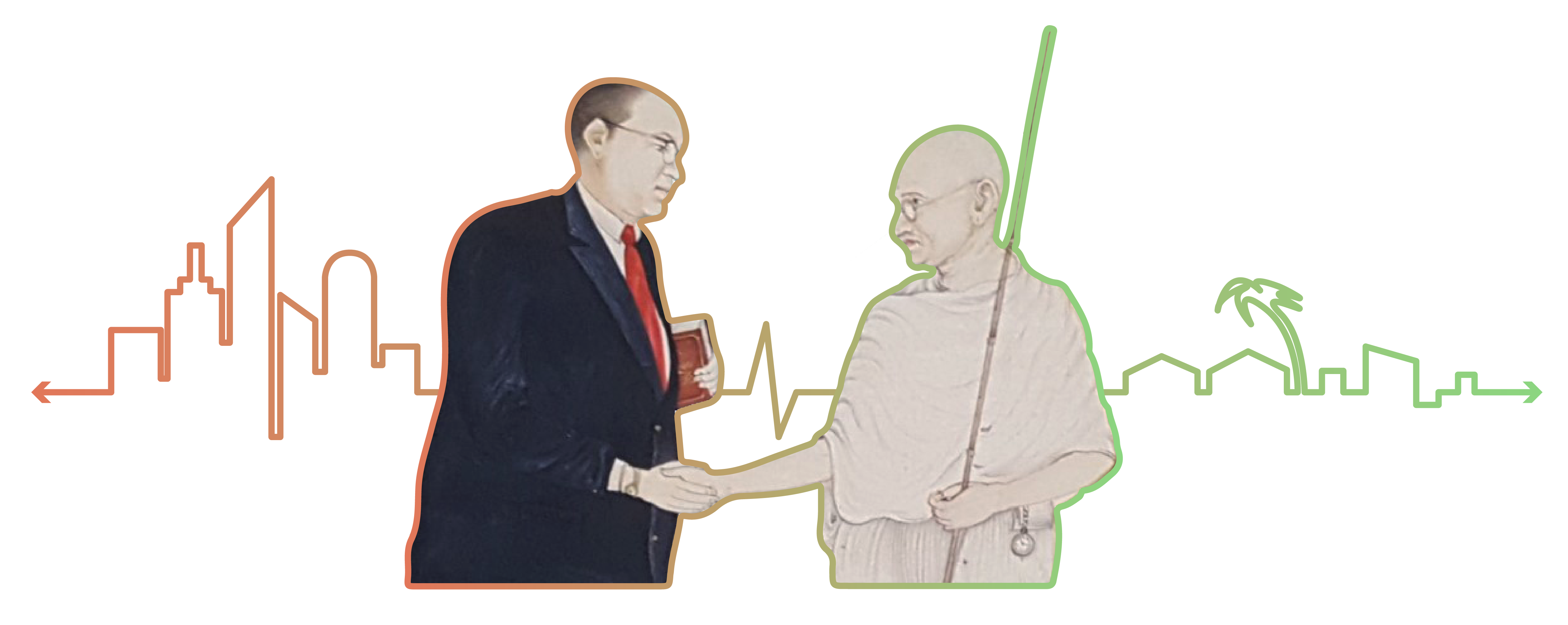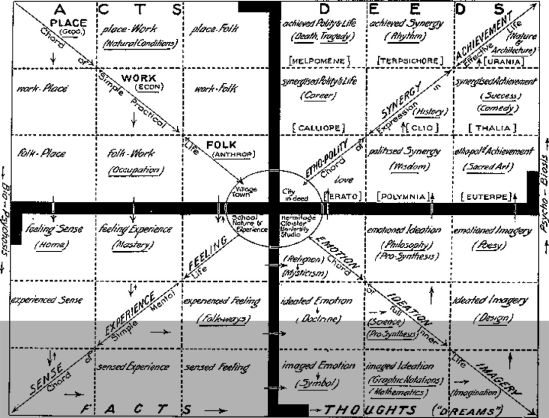Where Gandhi meets Ambedkar

Where Gandhi meets Ambedkar
Archetypes embody the basic characteristics of a person, idea or object. In Jungian terms they are mental images populating our collective unconscious. In political discourse, archetypes are symbols, which carry ideologies and have the power to influence popular imagination.
Mahatma Gandhi’s notion of a village became an important archetype, representing his political values — an authentic Indian identity, self-reliance, the use of local resources and industriousness. It was for him, the site of transformation in which the ills of Indian society could be diluted by its strengths, as long as people remained committed to hard work and a simple lifestyle.
For a long time the ruling elite and progressive voices considered the village as the ultimate horizon for a post-colonial Indian society. The development agenda was centred on the imagined reality of the Indian village, where a statistical majority of Indians are still said to be living. Cities were seen as economically and morally corrupt, forever tainted by imperial and feudal histories.
For Dr. Babasaheb Ambedkar on the other hand, the Indian village was a cesspool of caste ideology and oppression. Nothing there was quite redeemable. He saw the village as a reactionary ideal and an exploitive social context, which needed to be evaded by all means. The city on the other hand represented the possibility of social progress. Political plurality, access to education and professional opportunities offered venues for emancipation in the city.
The contradictions in their respective visions could never be resolved and the two great men could only be political opponents. Of course, the reality of the village and the city did not match Gandhi’s and Ambedkar’s ideals.
The village was never self-reliant, and it turns out that in its continuous relevance in the Indian context , it relies on connections to urban centres. Far from being preserved from the ills of modernity, it is most vulnerable to environmental devastation and market uncertainties.
The city may have offered a better context than the village for oppressed castes, but it remained stratified and unequal. And even in the 21st century the city’s spatial organisation, its neighbourhoods and the way they are being planned and serviced by the government still reflects caste biases. Public education and government jobs that should have offered equal opportunities are more segregated than ever.
There is no space that epitomises the limitations of both, a village centred or city-focused ideology more than the urban slum — with its reliance on caste-based networks, perpetuation of rural attitudes, overcrowded and understaffed schools, lack of vital infrastructure, minimal access to healthcare, economic hardship and a conflicted relationship to the state. The slum has come to embody the worst aspects of the village and the city to the point that it has become its own archetype.
It may even be said that the slum is where Gandhi’s and Ambedkar’s respective utopias of the village and the city are resolved — but in a dystopic form. It is where they meet, merge and cancel out each other.
However, if we simply consider their archetypical visions of the village and the city as political agendas and not as realities, they provide a powerful road map for the way we should deal with slums. Perhaps the Indian village is a site of transformation but in a different avatar altogether — one which comes into its own only when located within the Indian city? The village remains deeply entrenched in the lives of marginalised urban populations, who never fully give up their ancestral connections.
Perhaps the path for caste transformation is through the city, and back to the village. Many Dalit families make a point to return to their village after being empowered in the unequal and stratified city — building temples and bigger homes, and reconquering past histories. Their empowerment comes partly from the urban toehold that the slum provides.
Maybe it is from the dystopian slum kingdom that a truly modern sensibility can emerge. Perhaps the powerful utopian visions of Gandhi and Ambedkar will converge and become reality when the slums are finally allowed to fulfill their potential and become industrious, self-reliant homegrown neighbourhoods, whose inhabitants are offered equal access, rights and opportunities.


